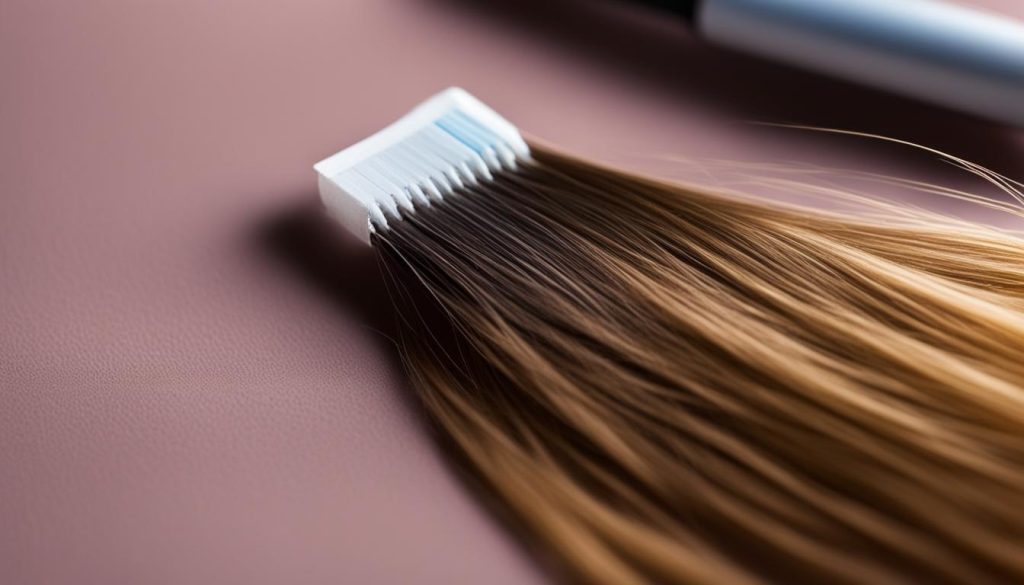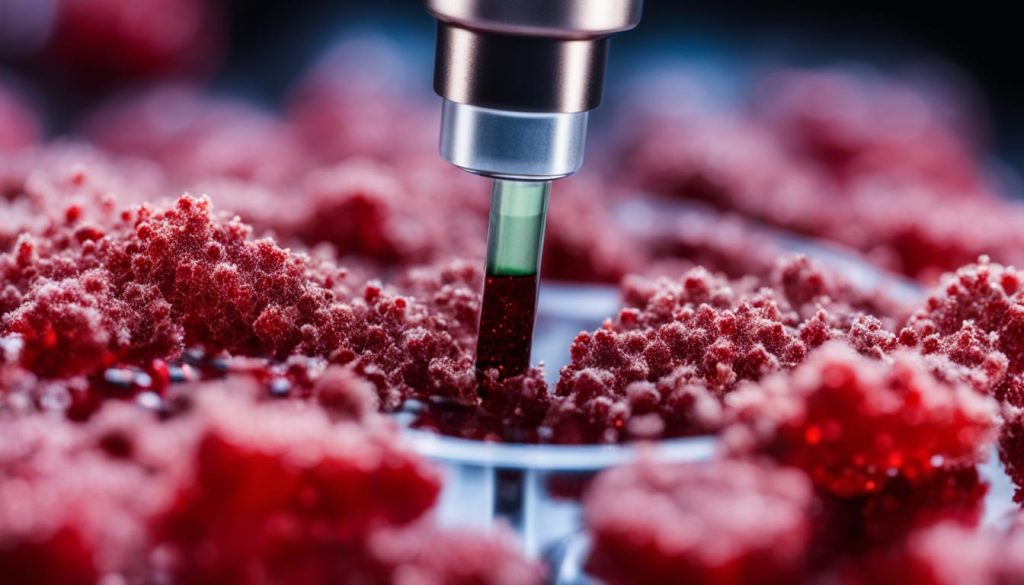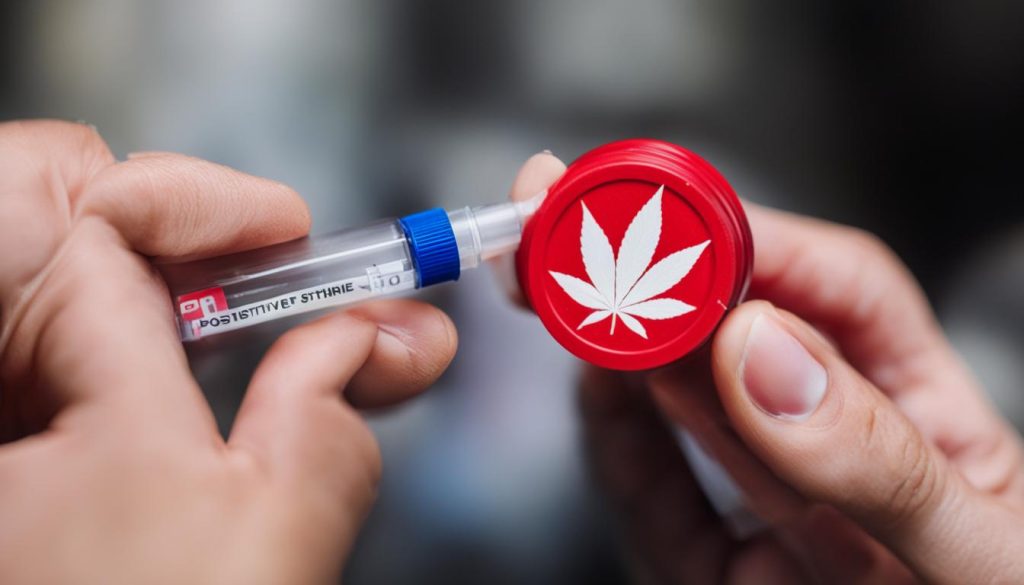
As the use of marijuana in professional sports continues to gain attention and debate, athletes and sporting organizations are grappling with the complexities of detection times and testing procedures. In this article, we delve into the fascinating world of marijuana retention in athletes, exploring how long cannabis stays in the human body and the various methods used to detect its presence. Stay informed and discover the crucial insights that athletes need to know!
Key Takeaways:
- Athletes should be aware of how long marijuana can be retained in their bodies
- Detection times for cannabis vary depending on factors such as frequency of use and metabolism
- Testing methods include urine, hair, blood, and saliva analysis
- Understanding and complying with drug testing policies and regulations is crucial for athletes
- Cannabis use in sports carries both risks and potential therapeutic benefits
How Long Does Cannabis Stay in the Human Body?
Cannabis, a widely used substance, can linger in the human body for varying durations depending on several factors. It’s important for athletes to understand these factors to ensure they are aware of the potential detection times when it comes to drug testing procedures.
Different methods of testing, such as analyzing blood, urine, hair, and saliva, can provide evidence of cannabis use for different lengths of time. For example, THC, the psychoactive component of cannabis, can be detected in urine for 5-8 days after one-time use, while frequent consumption may result in detection for up to 50-60 days. Hair testing, on the other hand, can detect THC use in the body for up to 3 months.
Factors such as the frequency and dosage of cannabis consumption play a significant role in determining detection times. Additionally, an individual’s metabolism, body fat percentage, and even the potency of the cannabis consumed can also impact detection durations. Athletes must understand how these factors influence the retention of cannabis in their bodies to make informed decisions regarding their cannabis use and potential drug testing outcomes.
| Cannabis Detection Method | Detection Time |
|---|---|
| Urine | 5-8 days (one-time use) up to 50-60 days (frequent consumption) |
| Hair | Up to 3 months |
| Blood | A few hours to 7 days |
| Saliva | Up to 48 hours |
It is worth noting that detection times are just one part of the equation when considering cannabis use in athletes. While cannabis offers potential therapeutic benefits for conditions commonly experienced by athletes, it is essential for athletes to be aware of the risks and potential consequences associated with its use. Additionally, understanding the specific drug testing policies and regulations within their sport and jurisdiction is crucial to avoid any potential legal or career repercussions.
Cannabis Detection in Urine
When it comes to detecting the presence of cannabis in the body, urine testing is one of the most commonly used methods. THC, the psychoactive component of cannabis, can be detected in urine for different durations based on the frequency and dosage of cannabis consumption.
For individuals who have used cannabis on a one-time basis, THC may be detectable in urine for around 5-8 days. However, for those who consume cannabis more frequently, THC can remain detectable in urine for up to 50-60 days. It’s important to note that these detection times are approximate and can vary based on individual factors such as metabolism.
Urine testing for THC detection is widely used due to its convenience and relatively quick results. After providing a urine sample, the testing process typically takes a few days to produce reliable results. It is important for athletes to be aware of the detection times associated with urine testing when considering cannabis consumption and being mindful of the specific regulations and thresholds within their sport.
| Frequency of Cannabis Consumption | Approximate Detection Time in Urine |
|---|---|
| One-time use | 5-8 days |
| Frequent use | Up to 50-60 days |
Key Points:
- Urine testing is a common method for detecting the presence of cannabis in the body.
- THC can be detected in urine for approximately 5-8 days for one-time cannabis use and up to 50-60 days for frequent consumption.
- Urine testing provides convenient and relatively quick results, typically taking a few days to process.
- Athletes should be aware of the detection times associated with urine testing and the specific regulations within their sport.
Cannabis Detection in Hair
When it comes to long-term detection of cannabis use, hair testing is considered the most accurate method. By analyzing a 1.5-inch hair sample, this type of testing can detect the presence of THC in the body from up to three months ago. Unlike other testing methods that rely on the detection of THC metabolites in bodily fluids, hair testing directly identifies the presence of THC itself. This makes it particularly useful for detecting cannabis use over an extended period.
The process of hair testing involves the collection of a small hair sample, typically from the scalp. The sample is then sent to a laboratory where it is subjected to various testing procedures to detect the presence of THC. Hair testing for cannabis is more expensive than urine or saliva testing, but its ability to provide information about long-term cannabis use makes it a valuable tool, especially in settings where historical cannabis use is of interest.
It is important to note that hair testing does have limitations. It does not provide information about recent or current cannabis use, as it takes several days for THC to appear in the hair shaft. Additionally, hair color and type can affect the accuracy of the test. Darker hair may bind more easily to THC, potentially resulting in a higher detection rate. Overall, hair testing for cannabis offers a reliable and informative method for detecting long-term use.

| Detection Time | |
|---|---|
| Short-Term Use | Up to 3 months |
| Recent Use | Not Detectable |
| Accuracy | High |
| Cost | Expensive |
Table: Detection Time and Characteristics of Hair Testing for Cannabis
Cannabis Detection in Blood
When it comes to detecting cannabis use in athletes, blood testing is a commonly employed method. THC, the psychoactive component of cannabis, does not stay in the bloodstream for an extended period, as it is rapidly metabolized by the body. The detection times for THC in blood can range from a few hours to a maximum of 7 days for heavy users, depending on various factors.
One of the key advantages of blood testing is its ability to provide real-time information about recent cannabis use. Unlike other detection methods that can detect THC use over a longer period, blood testing offers a snapshot of an individual’s cannabis consumption within a narrower timeframe. This makes it useful for confirming initial positive results from other tests, as well as for monitoring athletes’ adherence to drug policies.
It is important to note that the detection window for THC in blood may be influenced by factors such as the frequency and dosage of cannabis use, as well as an individual’s metabolism. While occasional cannabis users may have shorter detection times, heavy users may have THC detectable in their blood for a longer period. Therefore, athletes should be mindful of their cannabis use and its potential impact on blood test results.
| THC Detection in Blood |
|---|
| Duration of Detection |
| Occasional Users |
| Within a few hours to 3 days |
| Heavy Users |
| Up to 7 days |
“Blood testing for THC in athletes provides valuable insight into recent cannabis use and can help enforce drug policies effectively.” – Dr. Michael Johnson, Sports Medicine Expert

Overall, blood testing for cannabis detection in athletes is a valuable tool for monitoring recent cannabis use. While the detection window in blood is relatively short compared to other methods, it provides an accurate assessment of an athlete’s immediate cannabis consumption. Athletes should be aware of the potential impact of cannabis use on blood test results and ensure compliance with the regulations and policies set forth by their respective sports organizations.
Cannabis Detection in Saliva
Saliva testing for THC is commonly used to identify recent cannabis consumption, especially in the context of driving under the influence. THC can be detected in saliva for up to 48 hours after consumption, making it a convenient and non-intrusive method of testing. However, there are concerns about the overall accuracy of saliva tests.
According to studies, saliva testing has shown variable results in terms of sensitivity and specificity. While it can detect recent cannabis use, it may not be as reliable as other methods for determining the frequency or dosage of consumption. Factors such as oral hygiene, hydration, and the presence of other substances in the saliva can affect the accuracy of the test. False positives and false negatives are possible, leading to potential challenges in accurately identifying cannabis use.
Despite the limitations, saliva testing remains a popular choice for roadside drug testing and quick screening purposes. its quick detection window and ease of administration make it a valuable tool in certain situations. However, for more comprehensive and accurate analysis, other methods such as urine or hair testing may be required.

Summary:
In summary, saliva testing for THC detection offers a convenient and non-intrusive method of identifying recent cannabis consumption. However, its accuracy may be influenced by various factors, and it may not provide a comprehensive analysis of frequency or dosage. While saliva testing has its advantages and is commonly used for quick screening purposes, it should be complemented with other testing methods for more accurate results.
Factors Affecting THC Detection in the Body
In order to understand how long THC, the psychoactive element in cannabis, can be detected in the body, it is important to consider several factors. These factors can influence the duration of THC detection and vary from person to person.
Metabolism: Metabolism plays a crucial role in the breakdown and elimination of THC. Individuals with faster metabolisms are more likely to process THC more quickly, resulting in shorter detection times.
Body Fat: THC is stored in fat cells, which means that individuals with higher body fat percentages may have longer detection times. This is because THC is released more slowly from fat cells, leading to a prolonged presence in the body.
Exercise: Regular exercise can help boost THC elimination by increasing sweating and promoting overall metabolism. However, it is important to note that engaging in intense exercise just before a drug test can temporarily increase THC concentration in the bloodstream.
Potency and Frequency of Use: The potency of the cannabis consumed and the frequency of use also impact THC detection times. Higher potency cannabis and more frequent use can lead to longer detection times.
Table: Factors Affecting THC Detection in the Body
| Factor | Effect on THC Detection |
|---|---|
| Metabolism | Faster metabolism results in shorter detection times. |
| Body Fat | Higher body fat percentages can lead to longer detection times. |
| Exercise | Regular exercise can boost THC elimination, but intense exercise before a test can temporarily increase THC concentration in the bloodstream. |
| Potency and Frequency of Use | Higher potency cannabis and more frequent use can result in longer detection times. |
It is important for athletes to be aware of these factors and how they can impact THC detection in the body. By understanding the influences of metabolism, body fat, exercise, and cannabis potency and frequency of use, athletes can make informed decisions regarding their cannabis consumption and be prepared for any drug testing procedures they may undergo.
Benefits of Cannabis Use in Athletes
As athletes, we are constantly pushing our bodies to the limit, which can often lead to various physical and mental challenges. That’s why many athletes are turning to cannabis for its therapeutic properties. Cannabis has been found to have potential benefits in managing pain, inflammation, anxiety, and other conditions commonly experienced by athletes.
Athletes who incorporate cannabis into their pain management routines often report positive results. By utilizing the natural properties of cannabis, they can find relief from the physical strain that comes with intense training and competition. Unlike traditional pain medications such as opioids, cannabis is considered to be a safer alternative with fewer side effects.
Furthermore, cannabis can help athletes achieve a state of mental focus and relaxation. It has been shown to reduce anxiety and promote restful sleep, both of which are essential for optimal athletic performance. By alleviating stress and promoting a sense of calm, cannabis can contribute to overall well-being and help athletes stay in peak condition.
Table: Therapeutic Benefits of Cannabis Use in Athletes
| Condition | Potential Benefits |
|---|---|
| Pain | Relief from chronic pain and inflammation |
| Anxiety | Reduction in anxiety and stress levels |
| Sleep | Promotion of restful sleep and improved recovery |
| Recovery | Enhanced muscle recovery and reduced muscle soreness |
| Mood | Elevation of mood and overall well-being |
It is important to note that the benefits of cannabis use in athletes vary from person to person. Each athlete should carefully consider their own needs, consult with medical professionals, and abide by the rules and regulations set forth by their respective sports organizations.

Cannabis Use and Drug Testing Policies
When it comes to drug testing for cannabis, athletes need to be well-informed about the regulations and thresholds in place. Drug testing is common in various settings, including healthcare, workplaces, and the criminal justice system, and each has its own specific requirements. It is crucial for athletes to understand the specific rules and regulations within their sport to ensure compliance.
Regulations surrounding cannabis use and drug testing have undergone significant changes in recent years. While cannabis remains a Schedule 1 drug at the federal level, some states have legalized its use for medicinal or recreational purposes. This creates a complex legal landscape for athletes, as regulations can vary depending on the state they are in. Athletes must be aware of the specific laws and restrictions in their jurisdiction to avoid potential penalties or disqualification.
Thresholds for detecting THC, the psychoactive element in cannabis, also vary depending on the testing method and organization. Different sports governing bodies and leagues may have different thresholds for allowable THC levels. In recent years, some organizations have raised the threshold for THC detection in recognition that athletes may have used cannabis out-of-competition. However, athletes still need to be mindful of their use and understand the specific rules and regulations within their sport.
| Drug Testing Policies | Regulations | Thresholds |
|---|---|---|
| Healthcare | Varies by institution | Specific to institution |
| Workplaces | Varies by employer and industry | Specific to employer |
| Criminal Justice System | Varies by jurisdiction | Specific to jurisdiction |
| Sports | Varies by governing body and league | Specific to sport |
Risks and Benefits of Cannabis Use in Sports
The use of cannabis in sports can pose both acute and chronic risks for athletes. Acutely, cannabis consumption can result in sedation, altered sense of time, mood changes, and alterations in appetite. These effects may impair an athlete’s performance and coordination, making it unsafe to participate in competitive sports. Additionally, chronic cannabis use can lead to laziness, weight gain, and poor memory, which can negatively impact an athlete’s physical and mental abilities.
On the other hand, cannabis also offers potential benefits for athletes. It has been found to have therapeutic properties that can help manage pain, inflammation, anxiety, seizures, stress, and sleep-related issues. Many athletes are turning to cannabis as an alternative to traditional pain medications like opioids, which can be addictive and carry various side effects.
“Cannabis has provided me with a natural and effective way to manage the chronic pain I experience as a professional athlete. It allows me to recover faster and perform at my best without the negative side effects of traditional pain medications.”
When comparing cannabis to alcohol, cannabis is generally considered a less harmful substance. Alcohol consumption can impair judgment, coordination, and reaction time, whereas cannabis may have fewer acute risks in terms of physical impairment. However, it is important to note that the long-term effects of cannabis use, especially in high doses, are still being studied.
| Acute Risks | Chronic Risks | Benefits |
|---|---|---|
| Sedation | Laziness | Pain management |
| Altered sense of time | Weight gain | Inflammation reduction |
| Mood changes | Poor memory | Anxiety management |
| Appetite alterations | Seizure control |
While cannabis may offer potential benefits for athletes, it is essential for them to weigh these benefits against the risks and consider the regulations and restrictions in their specific sport. Each athlete should make an informed decision, taking into account their own health, safety, and the rules of their respective athletic organizations.
Understanding State and Federal Regulations on Marijuana
In the United States, the laws surrounding marijuana can be complex due to the varying regulations at the state and federal levels. While some states have legalized cannabis for medical or recreational use, it is important to note that marijuana is still classified as a Schedule 1 drug by the federal government. This disparity creates a unique legal landscape for athletes and individuals involved in sports, where regulations can differ depending on the state they are in.
In states where marijuana is legalized, athletes may have more leniency in their cannabis use, especially outside of competition. However, it is crucial to understand the specific laws and regulations within each state to ensure compliance. Athletes must be aware of the allowable THC levels, possession limits, and any restrictions on public consumption or driving under the influence.
Furthermore, even in states where marijuana is legal, athletes must consider the potential implications of federal laws. Federal regulations can supersede state laws, and athletes may still face consequences if they test positive for THC during federal drug tests or competitions regulated by federal organizations. It is essential to consult with legal professionals who specialize in sports law to navigate the complexities of state and federal regulations regarding marijuana use.
The Legalization Landscape
Below is an overview of the current status of marijuana legalization in the United States:
| State | Medical Use | Recreational Use |
|---|---|---|
| California | Legal | Legal |
| Colorado | Legal | Legal |
| Oregon | Legal | Legal |
| Texas | Illegal | Illegal |
| Washington | Legal | Legal |
It is crucial to note that the legalization landscape is constantly evolving, with new states considering or enacting marijuana reform. Athletes should stay informed about any updates to the laws within their respective states to ensure compliance and avoid any potential legal or career consequences.
Conclusion
In conclusion, our examination of marijuana retention in athletes has shed light on the detection times and testing procedures related to cannabis use. It is evident that THC, the psychoactive component in cannabis, can remain in the human body for varying durations depending on factors such as frequency of use and metabolism.
Throughout this article, we have explored the detection times and procedures for different methods of testing, including urine, hair, blood, and saliva. Each method has its advantages and limitations, with urine testing being commonly used due to its cost-effectiveness and relatively quick results.
As drug testing policies and regulations continue to evolve, we have seen some organizations removing cannabis from their doping policies, acknowledging the potential therapeutic benefits it may offer athletes. However, it is crucial for athletes to stay informed about the risks, benefits, and legal implications of marijuana use in their specific sport and jurisdiction.
By understanding the intricacies of marijuana retention and testing, athletes can make informed decisions about their cannabis use, ensuring compliance with the rules and regulations of their sport. It is our hope that this article has provided valuable insights into this complex topic, allowing athletes to navigate the intersection of marijuana and sports with knowledge and awareness.
FAQ
How long does cannabis stay in the human body?
Cannabis can remain in the human body for anywhere between 10-30 days, depending on various factors such as frequency and dosage of consumption.
What parts of the body can show evidence of cannabis use?
Different parts of the body, such as blood, urine, hair, and saliva, can all show evidence of cannabis use for different lengths of time.
How long can THC be detected in urine?
One-time use of cannabis may result in detectable THC in urine for 5-8 days, while frequent consumption can lead to THC detection for up to 50-60 days.
How long can THC be detected in hair?
Hair testing can detect THC use from up to 3 months ago by analyzing a 1.5-inch hair sample.
How long can THC be detected in blood?
THC is quickly metabolized by the body, with detection times ranging from a few hours to a maximum of 7 days for heavy users.
How long can THC be detected in saliva?
THC can be detected in saliva for up to 48 hours after consumption, making it a convenient method of testing for recent cannabis use.
What factors can influence THC detection in the body?
Factors such as metabolism, body fat percentage, exercise, potency of cannabis consumed, and frequency of use can all impact THC detection times.
What are the benefits of cannabis use in athletes?
Cannabis can help manage pain, inflammation, anxiety, and other conditions commonly experienced by athletes.
What are the drug testing policies for cannabis use in sports?
Drug testing policies and regulations vary, with specific THC thresholds for detection. Some organizations have shown increased acceptance of cannabis use by athletes.
What are the risks and benefits of cannabis use in sports?
Acute risks of cannabis use include sedation, altered sense of time, mood changes, and appetite alterations. Chronic risks include laziness, weight gain, and poor memory. However, cannabis can also be beneficial for conditions like PTSD, anxiety, seizures, stress management, and sleep.
How do state and federal regulations affect marijuana use in sports?
While some states have legalized cannabis, it is still considered a Schedule 1 drug at the federal level. Athletes need to understand the regulations and restrictions in their specific jurisdiction.
















